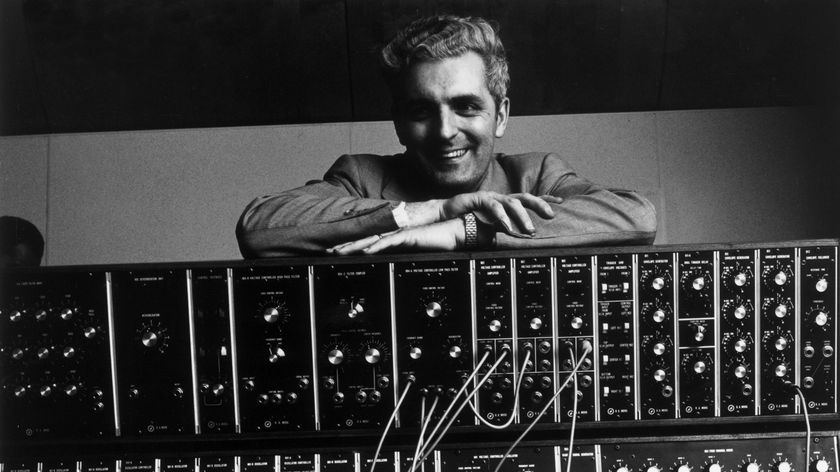
John 5 talks Careful With That Axe track-by-track
Rob Zombie guitarist John 5 covers a lot of stylistic territory on his wildly entertaining eighth solo album, Careful With That Axe, including everything from Spanish-style acoustic ballads to raging heavy metal to not one, but two country-bluegrass tributes to his hero, the late Jerry Reed.
"I think if you were to ask me, 'What do I like to listen to? What kind of things are you into?' you'd get a pretty good idea by listening to this record," John 5 says. "I love heavy stuff, I love pretty acoustic music, and I've always been into Jerry Reed, who was just one of the best pickers the world has ever known."
John 5 recorded Careful With That Axe at The Doghouse Studios in Los Angeles during Zombie tour breaks, working with drummer and co-producer Rodger Carter, along with bassist Matt Bissonnette. “I’ve worked with Roger before and have known him for most of my adult life," John 5 notes. "Matt I’ve never worked with before, but I know him through David Lee Roth. Dave would always talk about Matt and would tell me what a monster he was. I used to do the bass myself, but I wanted to shake it up on this record. Matt ended up being the perfect choice for this."
In the past, John 5's instructions to studio drummers were pretty simple: "I'd tell them, 'Keep the beat and stay out of my way,'" he says with a laugh. This time, however, he was looking for a more immersive kind of musical interaction between the players. "It was really important to me to get more of a live band sound," he explains. "I wanted each instrument to be very vocal and very crazy, but at the same time, they had to really complement one another. You need two very mature and intuitive players to pull that off. Rodger and Matt nailed it all beautifully."
One thing that was simple was John 5's guitar-and-amp setup: one of his signature gold Telecasters, a Marshall combo amp and a Boss Super Overdrive pedal. “Because I wanted that live sound, I didn’t want to fuss around with all kinds of guitars and setups," he says. "Those three things were basically what I used – no trickery. My whole attitude is, 'If I have a pick, I’ll be able to play; and even if I don’t have a pick, I can play.'"
John 5's Careful With That Axe will be released on August 12 via 60 Cycle Hum. You can pre-order the album on Amazon. On the following pages, John 5 walks us through the record track-by-track.

We Need To Have A Talk About John
“There are a couple of meanings to Careful With That Axe. When I first got a guitar, or when anybody first gets one, you never know where it’s going to take you. It could bring you great success and happiness, or it might bring you frustration and great sadness. That’s one part of the meaning of the title.
“The other part references all of these axe murders and things like that. When I was little, I wasn’t into playing ball like other kids. I would just play the guitar all the time – and I’d watch monster movies. So saying, ‘We need to have a talk about John’ is what you would say about this kid who won’t put down his guitar and is always watching these weird movies. The intro is what’s going on inside my head.”

This Is My Rifle
“It’s like, ‘This is my guitar rifle, this is my life, and this is what I have in my hands.’ It’s how I spend most of my day. Musically, it’s a tribute to Al Di Meola – it’s got the machine gun sound. I don’t know if everybody will be able to pick that out, but there you go.
“All of these song titles mean a lot. This one – and I'm pretty sure that most people will get it – is an homage to Kubrick, to Full Metal Jacket.”

Flight Of The Vulcan Kelly
“So this is my homage to Flight Of The Bumble Bee. When I was a little kid, I loved that song; I’d jump around the house listening to it all the time. Also, Kelly Vulcan is a brand of an axe from a long time ago. Flight of the Vulcan Kelly is somebody swinging the axe.
“There’s a lot of notes in this song. It’s just over two minutes, but it’s full-on ripping. Rodger Carter and Matt Bissonnette are astonishing. We rehearsed a lot, as you might imagine. When you’re going for a live feel, you don’t want to have to assemble the takes. So we ran the song down a few times and picked the one that really knocked us out.”
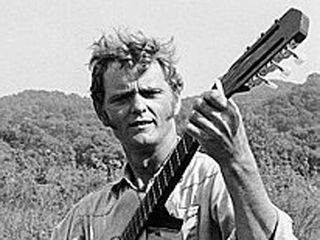
Jerry's Breakdown
“I love Jerry Reed. When I was growing up, my dad was really into Les Paul, Chet Atkins and Jerry Reed, and he would always play their records. I remember seeing Jerry Reed on TV. A lot of people know him from the acting he did – and he was a good actor – but man, he was a great singer and songwriter, and what an incredible picker.
“Jerry’s Breakdown was always one of my favorites, so I decided to do my tribute. I wanted to educate these kids who have no idea who he was. Maybe I can turn them on to some really great picking.
“I stayed pretty close to the original, but on the solo I went off a little bit. It was so much fun. I just love to play this song live, but I have to modify my sound for it. I go super-clean and take the noise suppressor off. You’re picking so much, so it’s important that everything comes across as clear as possible.”

Six Hundred And Sixty Six Pickers In Hell
“There was a song that my dad used to listen to – A Thousand Pickers In Nashville. He always used to say, ‘I don’t know, John. It’s a million to one. It’s a really hard business, so just be careful.’ So I guess this is my response to all of that.
“It’s just an insane track, and it's definitely my favorite on the record. I play it live during the Rob Zombie show – it’s my solo – and people just lose their minds for it. It’s really a lot of fun. If this were the last instrumental record I ever do, I’d still be happy, and it’s all because of a song like this one.”
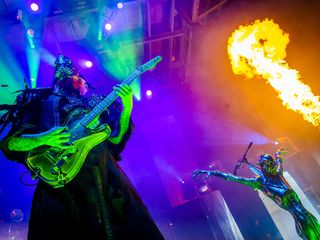
Portrait Of Sidney Sloan
“Sidney Sloan is a real person. He’s a guy who killed his father with an axe and pretty much got away with it. It’s fun to have these titles. If you looked them up on Google, things will kind of come together for you.
“This is a heavy, heavy track, and it’s tuned down to C. Rodger Carter does a fantastic drum solo, so it’s his favorite song to play live, as you can imagine. We just had a blast cutting it. Out of everything, it took the longest – we did a couple of versions of it. We went a little back and forth – ‘Should I play during the drum solo? Should I not?’ In the end, we left it up to Roger.”

Jiffy Jam
“I really wanted to bring Jerry Reed to the people, so here's another one of his great tracks. This one is very different from Jerry’s Breakdown, as it’s a western swing piece. It’s got a bit of a Chet Atkins picking thing going on, which is so much fun to play.
“Whenever I’m sitting around with a guitar in my hands, this is the kind of thing that I’ll mess around with. I love the western swing bassline playing that melody – so great. I went off again on the solo, going a little crazy. Oh, and there’s a bass solo, too. It’s a full musical meal. The whole thing puts a real smile on my face.”
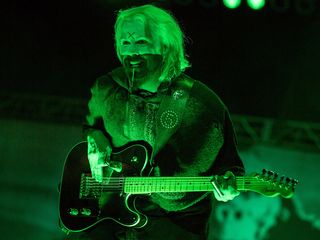
Villisca
“In Villisca, Iowa, there was an axe murder 100 years ago. Of course, that intrigued me. [Laughs] This track came out so cool – very funky and weird sounding.
“I’m making all of the sounds myself; there’s no effects other than I just a little distortion. There’s this little bypass button on my guitar, which makes it sound really neat. I’m doing stuff behind the nut and banging the strings against the pickup. It makes this awesome rhythmic sound.
“Everybody did a great job on it. Matt and I do this double-tapping thing together, which was just unbelievable. It’s got a really nice melody in the chorus. There’s a lot to the song. I’m so happy with how it turned out.”

El Cucuy
“The name means ‘bogeyman’ in Spanish. The story with this is parents saying, ‘You kids better go to bed, or else El Cucuy is gonna get you.’
“I adore that Spanish style of picking. It’s so different from country or western swing. It’s a real workout for your fingers, the motor skills that you use. I really like studying stuff that takes you out of your comfort zone.
“I used an old Martin acoustic on it. We were rehearsing this in the studio, and the miking wasn’t the best. I was a little concerned about that, but when I heard it back I said, ‘Let’s keep it. The performance is magical. I don’t think we’re going to be able to beat it.’ So I think this is one of the first or second tries of us rehearsing the track. Something about it just felt right.
“It takes a while for me to acclimate to the width of a Spanish-style acoustic neck. From playing a Tele so much, I’m not really used to anything else. When I play this one live, I’ll probably use a hollow body Tele.”

The Dream Slayer
“What can I say? This is just a crazy, crazy song with everybody going nuts. The title is interesting. You know how people get these names like Jack The Ripper? Well, there was this guy called The Dream Slayer. He would wake up in the middle of the night and kill people with an axe. That was his defense – he was the ‘dream slayer.’
“It’s just full-blown, all-out musical insanity. I thought that was the best way to end the record. What could be more fun than total chaos?”

Joe is a freelance journalist who has, over the past few decades, interviewed hundreds of guitarists for Guitar World, Guitar Player, MusicRadar and Classic Rock. He is also a former editor of Guitar World, contributing writer for Guitar Aficionado and VP of A&R for Island Records. He’s an enthusiastic guitarist, but he’s nowhere near the likes of the people he interviews. Surprisingly, his skills are more suited to the drums. If you need a drummer for your Beatles tribute band, look him up.

"Reggae is more freeform than the blues. But more important, reggae is for everyone": Bob Marley and the Wailers' Catch a Fire, track-by-track
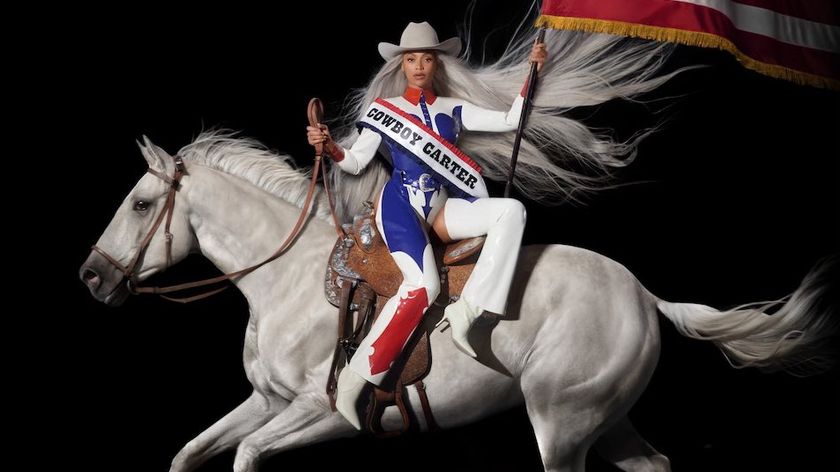
“Part of a beautiful American tradition”: A music theory expert explains the country roots of Beyoncé’s Texas Hold ‘Em, and why it also owes a debt to the blues

"Reggae is more freeform than the blues. But more important, reggae is for everyone": Bob Marley and the Wailers' Catch a Fire, track-by-track

“Part of a beautiful American tradition”: A music theory expert explains the country roots of Beyoncé’s Texas Hold ‘Em, and why it also owes a debt to the blues
Most Popular








